According to this Microsoft document you should be able to apply attribute like [RequiredScope("SomeScopeName")] to either controller level or action level to protect the API. But when I try it in my API, it doesn't seem to have any effect at all - regardless what scope name I use (I made sure I don't have the scope by that name in the token), I always get right in to the API actions that I supposed to fail. But at the same time, my policy attributes, such as [Authorize(Policy = "PolicyName")], works just fine. What am I missing?
[ApiController]
[RequiredScope("AnyRandomName")]
public class MyApiController : ControllerBase
{
UPDATE
Here is my Startup.cs
public class Startup
{
public Startup(IConfiguration configuration)
{
Configuration = configuration;
}
public IConfiguration Configuration { get; }
public void ConfigureServices(IServiceCollection services)
{
IdentityModelEventSource.ShowPII = true;
services.AddControllers();
services.AddSwaggerGen(opt =>
{
opt.CustomSchemaIds(type => type.ToString() + type.GetHashCode());
});
services.Configure<HostOptions>(Configuration.GetSection(HostOptions.HOST));
JwtSecurityTokenHandler.DefaultInboundClaimTypeMap.Clear();
JwtSecurityTokenHandler.DefaultOutboundClaimTypeMap.Clear();
services.AddAuthentication("Bearer").AddJwtBearer(options =>
{
options.Authority = Configuration[HostOptions.IDENTITYGATEWAY];
options.SaveToken = true;
options.TokenValidationParameters = new TokenValidationParameters
{
ValidateAudience = false
};
});
services.AddTransient<gRPCServiceHelper>();
}
public void Configure(IApplicationBuilder app, IWebHostEnvironment env)
{
if (env.IsDevelopment())
{
app.UseExceptionHandler("/error-local-development");
app.UseSwagger();
app.UseSwaggerUI(c => c.SwaggerEndpoint("/swagger/v1/swagger.json", "GroupDemographicEFCore v1"));
}
else
{
app.UseExceptionHandler("/error");
}
app.UseHttpsRedirection();
app.UseRouting();
app.UseAuthentication();
app.UseAuthorization();
app.UseEndpoints(endpoints =>
{
endpoints.MapControllers();
});
}
}
and here is my API controller
[ApiController]
[Authorize]
[RequiredScope("NoSuchScope")]
public class MyApiController : ControllerBase
{
public MyApiController([NotNull] IConfiguration configuration, [NotNull] ILogger<MyApiController> logger,
[NotNull] gRPCServiceHelper helper) : base(configuration, logger, helper)
{
}
[HttpGet]
[Route("/clients/summary")]
public async Task<IActionResult> ClientsSummaryGet()
{
...
Note that I applied the attributes here on the controller level. But it makes no difference if I move them down to action level - the RequiredScope attributes always gets ignored.
UPDATE-1
I left out the AddAuthorization from my last post update, as I believe it is irrelevant to my issue here. I added it back now, with a few of the policies that I use. Once again, these policies are all working fine, and I don't see how this is relevant to the issue I have.
services.AddAuthorization(options =>
{
options.AddPolicy("OperatorCode", policy =>
{
policy.RequireAuthenticatedUser();
policy.RequireClaim("OperatorCode");
});
options.AddPolicy("OperatorCode:oprtr0", policy =>
{
policy.RequireAuthenticatedUser();
policy.RequireClaim("OperatorCode", "oprtr0");
});
options.AddPolicy("Role:User+OperatorCode:oprtr0", policy =>
{
policy.RequireAuthenticatedUser();
policy.RequireRole("User");
policy.RequireClaim("OperatorCode", "oprtr0");
});
options.AddPolicy("Role:Admin||Role:User", policy =>
{
policy.RequireAuthenticatedUser();
policy.RequireRole("Admin", "User");
});
});
Here is the access_token header




